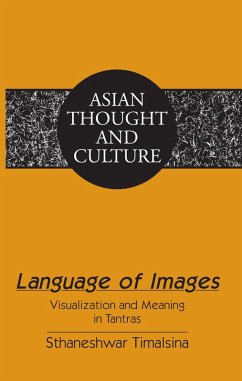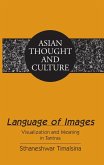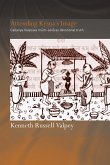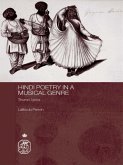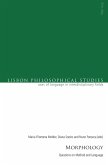While Indian visual culture and Tantric images have drawn wide attention, the culture of images, particularly that of the divine images, is broadly misunderstood. This book is the first to systematically address the hermeneutic and philosophical aspects of visualizing images in Tantric practices. While examining the issues of embodiment and emotion, this volume initiates a discourse on image-consciousness, imagination, memory, and recall. The main objective of this book is to explore the meaning of the opaque Tantric forms, and with this, the text aims to introduce visual language to discourse. Language of Images is the result of a long and sustained engagement with Tantric practitioners and philosophical and exegetical texts. Due to its synthetic approach of utilizing multiple ways to read cultural artifacts, this work stands alone in its attempt to unravel the esoteric domains of Tantric practice by means of addressing the culture of visualization.
Dieser Download kann aus rechtlichen Gründen nur mit Rechnungsadresse in A, B, BG, CY, CZ, D, DK, EW, E, FIN, F, GR, HR, H, IRL, I, LT, L, LR, M, NL, PL, P, R, S, SLO, SK ausgeliefert werden.
«It is refreshing to see a study that takes seriously visual images and visualization as primary pieces of evidence in seeking to understand the meaning and purpose of Tantra and South Asian religious traditions generally.... The overwhelming majority of people experience the meaning of their religious traditions through seeing images and hearing recitations. Sthaneshwar Timalsina's work on the visual image as itself a kind of 'language' is a welcome addition to research on Tantra.»
(Gerald James Larson, Research Professor, University of California, Irvine; Tagore Professor Emeritus, Indiana University, Bloomington; and Professor Emeritus, Religious Studies, University of California, Santa Barbara)
«... Hindu and Buddhist Tantras have attracted the attention not only of Sanskritists but of scholars of cultural anthropology, religious studies, and, of late even of some Jungian psychologists. But rigorous Western philosophers have kept a safe and often suspicious distance from such 'oriental mysticisms.' ...In this book, for the first time, Sthaneshwar Timalsina builds bridges between twenty-first-century psychology, phenomenology, semiotics, and philosophy of mind on the one hand and the wide and complex use of visual and proprioceptive images in altering bodily and mental states through contemplative practice.
Written with uncompromising clarity and robust common sense, this 'prasanna-pada'(gracefully phrased) exposition of the meaning and use of images in Tantric transformative spiritual practices is sure to transform the field of comparative philosophy of mind and of phenomenology of imagination. We have been waiting for an accessible yet textually meticulous introduction to the - ancient but alive - theory and practice of re-imagining the felt body that would attract a broadly philosophical readership the world over. With Timalsina's book, the wait has ended...» (Arindam Chakrabarti, Professor of Philosophy and Director of the EPOCH Eastern Philosophy of Consciousness)
(Gerald James Larson, Research Professor, University of California, Irvine; Tagore Professor Emeritus, Indiana University, Bloomington; and Professor Emeritus, Religious Studies, University of California, Santa Barbara)
«... Hindu and Buddhist Tantras have attracted the attention not only of Sanskritists but of scholars of cultural anthropology, religious studies, and, of late even of some Jungian psychologists. But rigorous Western philosophers have kept a safe and often suspicious distance from such 'oriental mysticisms.' ...In this book, for the first time, Sthaneshwar Timalsina builds bridges between twenty-first-century psychology, phenomenology, semiotics, and philosophy of mind on the one hand and the wide and complex use of visual and proprioceptive images in altering bodily and mental states through contemplative practice.
Written with uncompromising clarity and robust common sense, this 'prasanna-pada'(gracefully phrased) exposition of the meaning and use of images in Tantric transformative spiritual practices is sure to transform the field of comparative philosophy of mind and of phenomenology of imagination. We have been waiting for an accessible yet textually meticulous introduction to the - ancient but alive - theory and practice of re-imagining the felt body that would attract a broadly philosophical readership the world over. With Timalsina's book, the wait has ended...» (Arindam Chakrabarti, Professor of Philosophy and Director of the EPOCH Eastern Philosophy of Consciousness)

